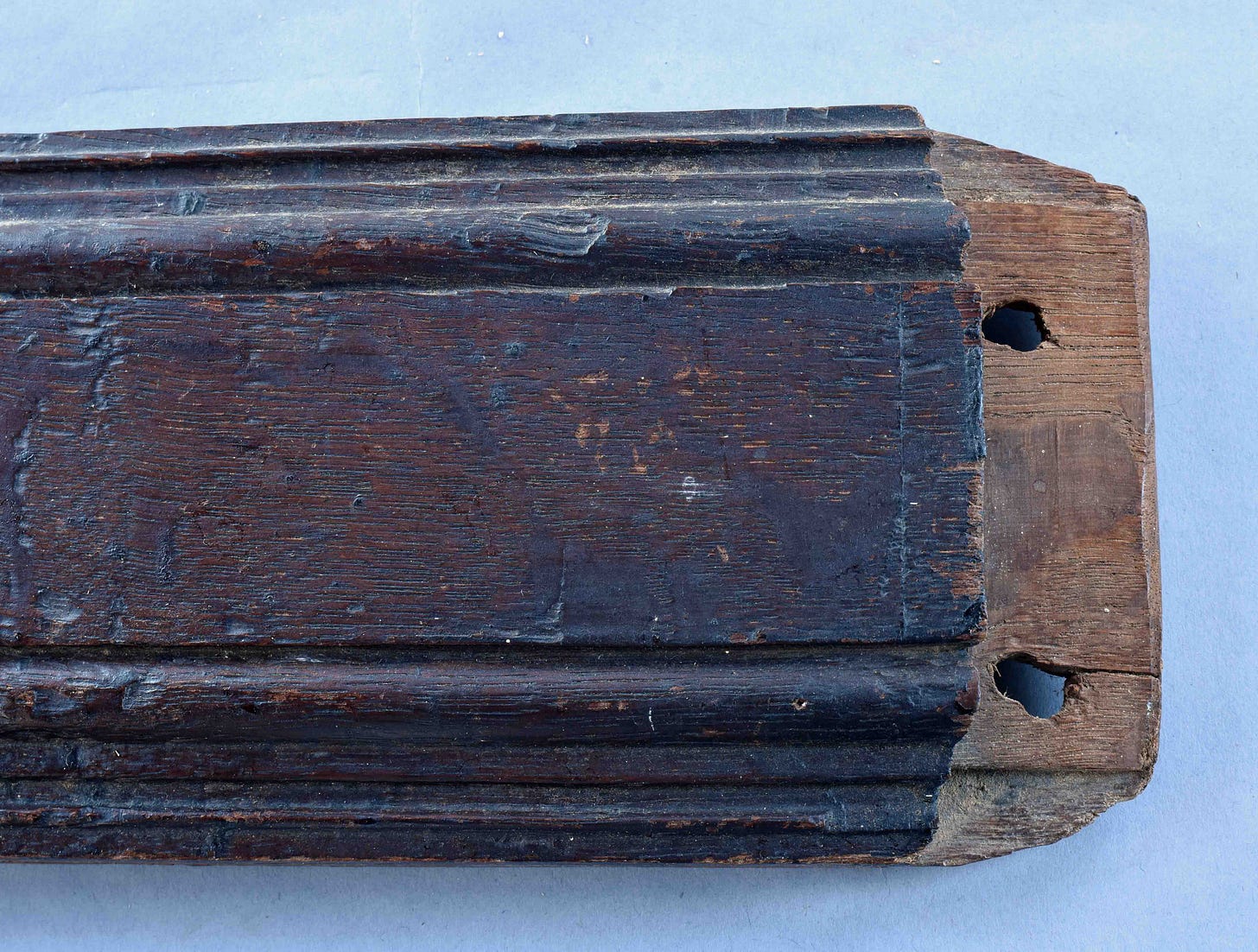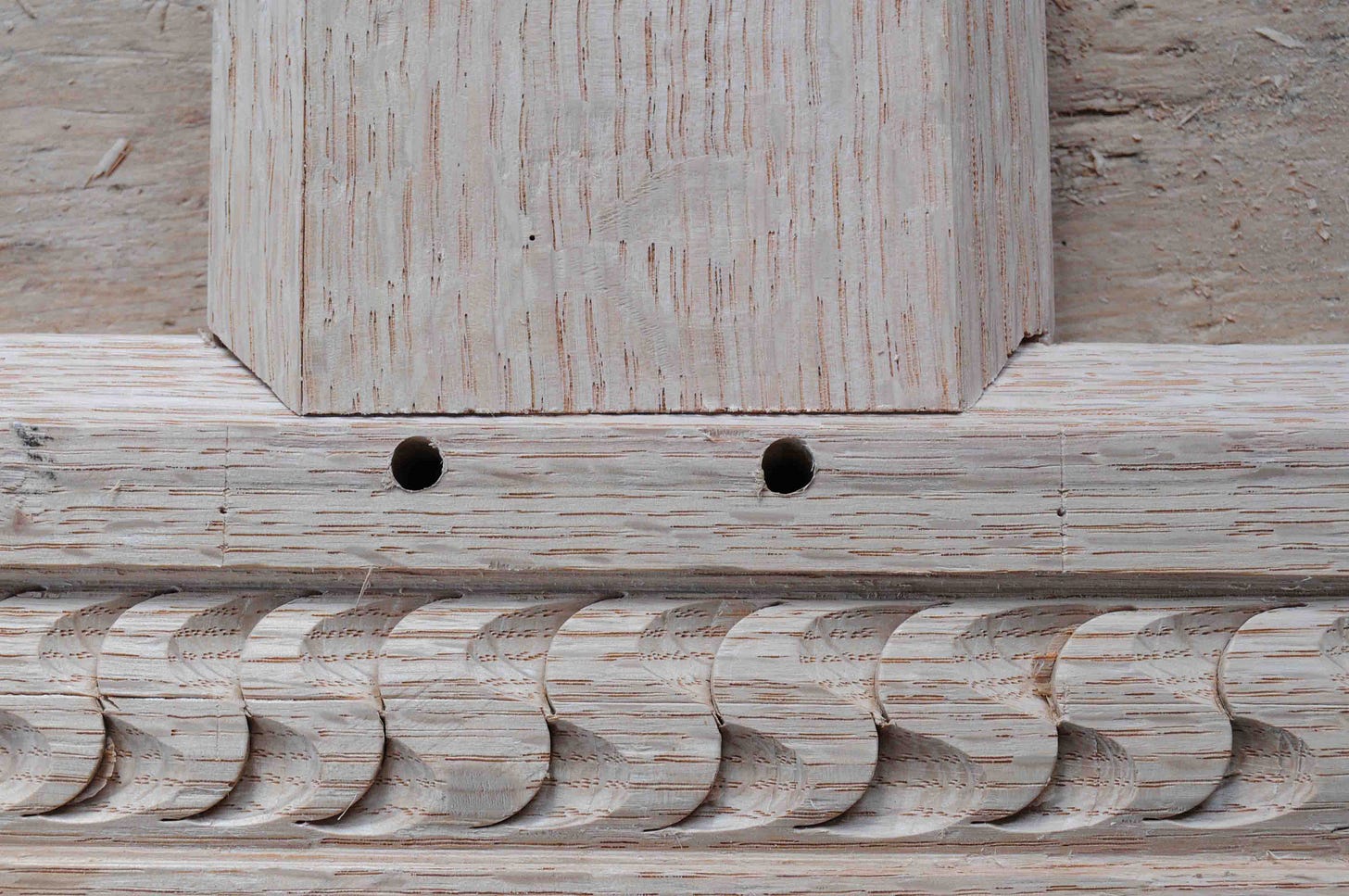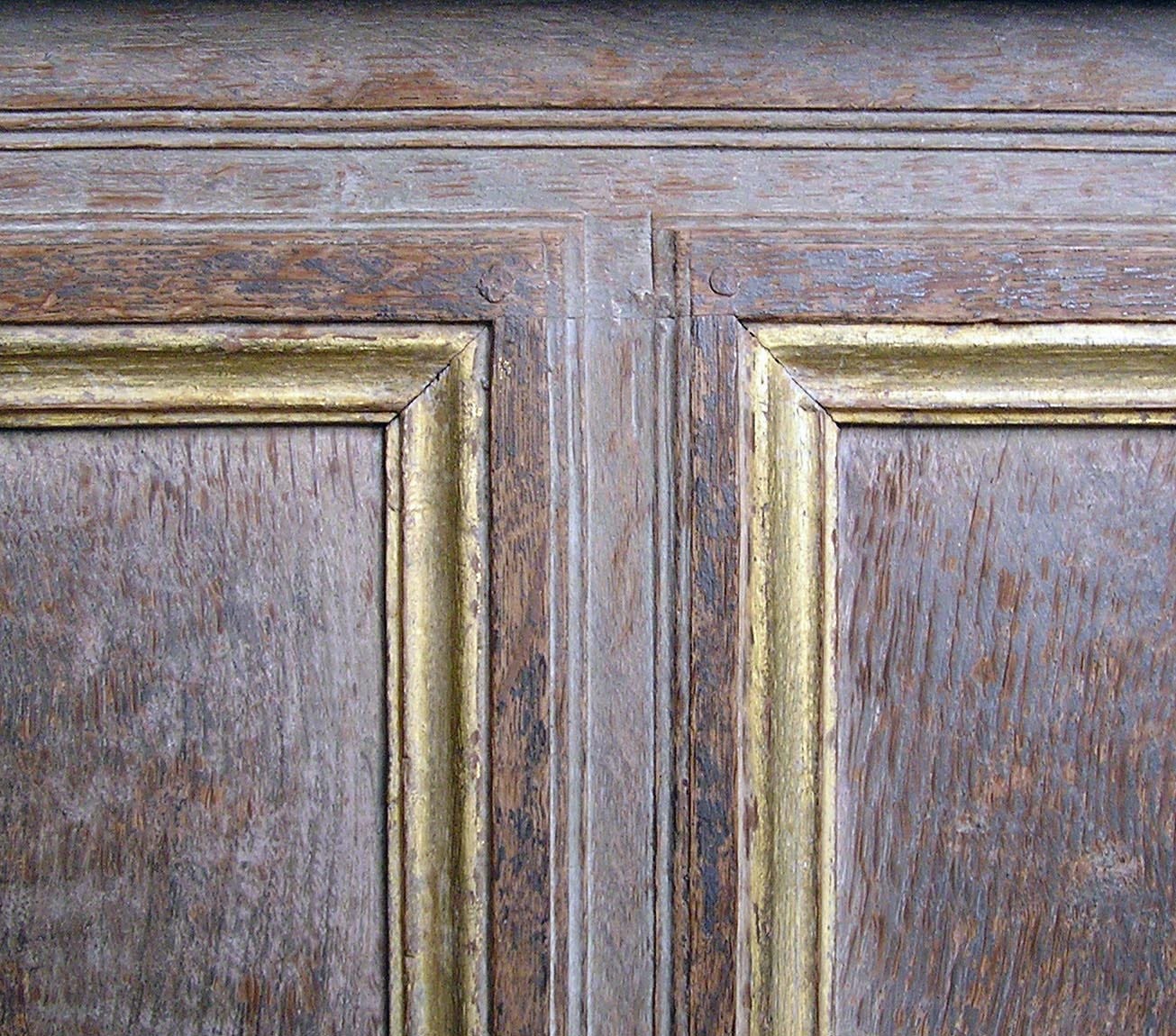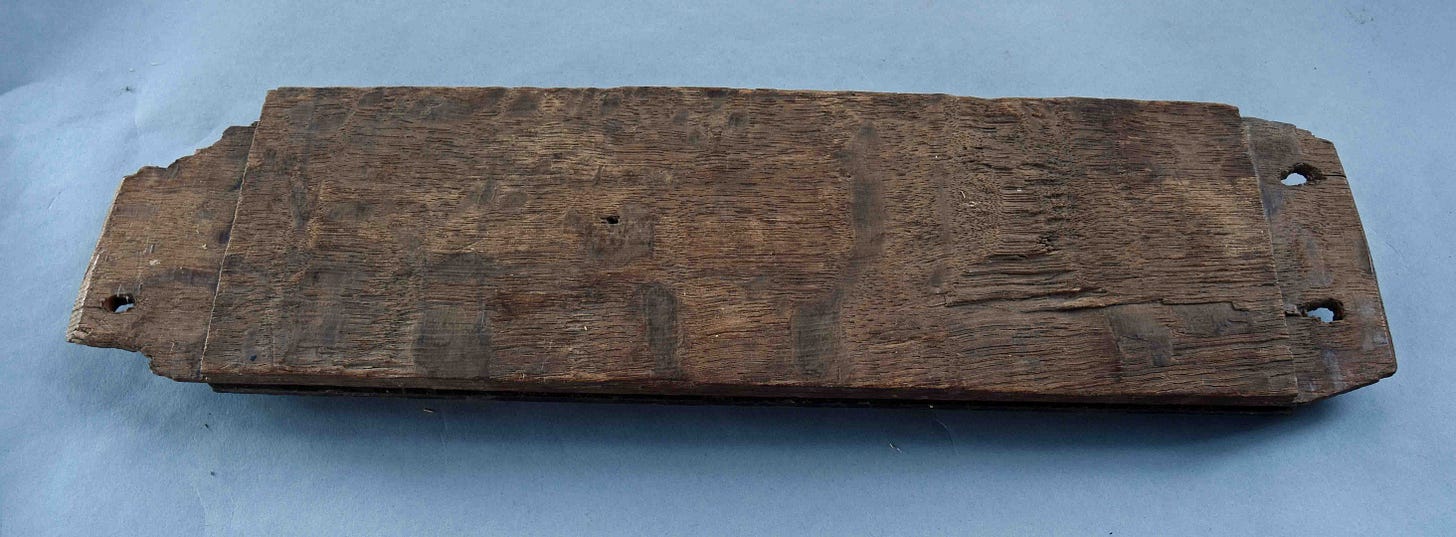[this week’s free-to-all subscribers is one more look at mitered mortise & tenon joints. Not usually found in New England work, but found in various configurations in old England. For some reason…]
I dug out a fragment I have from some English wall paneling - a muntin that Victor Chinnery gave to me on my first trip to England in 2000. Oak, of course. It’s 14 1/2” long, 4 1/8” wide. Large moldings on each edge, mitered at the top to meet integral moldings on the rail above - and undercut/mitered on the bottom tenon to slip over a beveled rail below.
Here’s a look at the bottom tenon - you can see a couple of things. One is the line struck across it with a square and awl to layout where the undercut needs to reach. Notice the holes for the pins - how close they look to the shoulder. But the shoulder is really at the bottom of that undercut/bevel. This is typical of a tenon with this configuration. The edges of the tenon are blown out by the panel groove and/or intentionally pared back to enter the mortise. Easier to nip off those corners than to dig out the bottom inside corners of the mortise.
What I don’t have is the beveled rail - here it is from one of the earlier posts in this series. Mine doesn’t have the layout line scribed across it. It should.
Now for the top tenon - now the end is mitered as in a picture-frame. Forty-five degree cuts at each edge to form a mitered molding around the top of the panel. You can see that these miters were cut after the tenon was formed and trimmed - the sawcut runs across the tenon. I imagine some of the bust-out here is from the piece being taken down from the wall. What I wish I had is the top rail where this muntin connects.
a picture below from my files of a box pew in Haddon Hall, Derbyshire. Very nice work, so neat that it’s hard to see what’s happening. Forget for the moment that plowed molding down the middles of these framing parts. They’re another story. That gilded molding isn’t applied, it’s integral. So the rail across the top of the photo has that molding formed along its bottom edge, then interrupted where the mortise is. Pretty sneaky work, not as forgiving as cutting a garden-variety joint with 90-degree shoulders all around.
Back to the muntin - I remember when I first learned about New England furniture of this period, all that beautiful, straight-grained oak. And heard that English stuff of the same period was made of awful, twisty gnarled oak. And I saw some that was just awful. But - remember - all generalizations are wrong. I saw some perfect oak too. Some from England, some imported. The muntin is riven stock - real nice wood. Slow-grown, easy to work. Quartered.
The back of this wide muntin from Devon is the sort of thing I expected all of England to be - I can’t imagine working wood like that, but I’m lucky to be in an area where good wood isn’t hard to get.
But look what that joiner did with that piece of oak -












I would plane the stock, do the layout of the tenons. Plow the grooves. Cut the moldings. Cut the tenons. Then miter the top end's moldings. We know this joiner cut the miters at the top after cutting & paring the tenon's thickness...
Fascinating work, Peter, thanks for sharing. I’m trying to visualize the sequencing of making a muntin like the first pic...what side do you register against to make your cuts, the top or bottom? Specifically wondering if you’d plow the side panel groove first (off the top/show face?) and then do the molding on the sides? Just curious, it’s likely in your videos that I can rewatch. Thanks again.